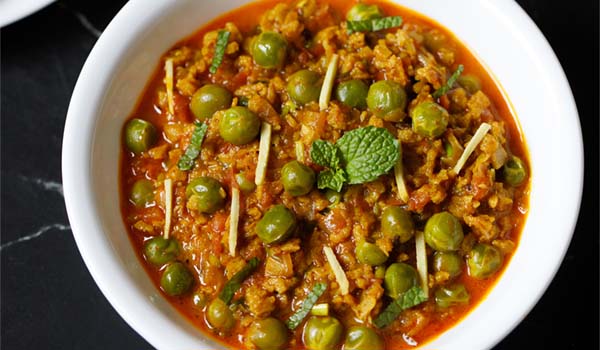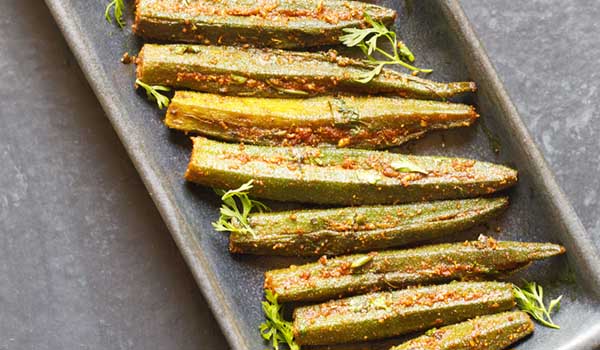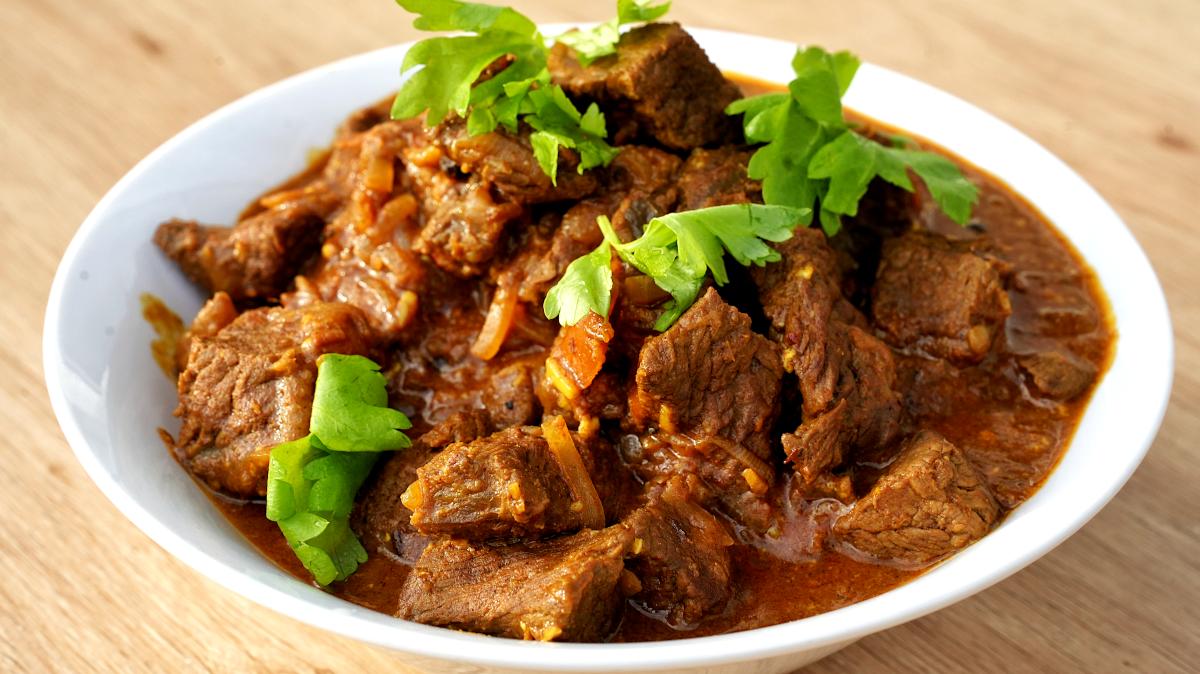Mayonnaise is a thick, creamy emulsion typically made from oil, egg yolks, vinegar or lemon juice, and seasonings. It has a smooth, rich texture and is commonly used as a spread, dip, or base for sauces and dressings. This creamy, healthy version of a vegan and egg-free mayonnaise is made with cashews. It is great for both vegans and vegetarians alike. If you are in search of an eggless, plant-based mayo recipe, look no further!

About This Mayonnaise Recipe
Many have requested an eggless mayonnaise recipe, and after numerous trials, I have discovered a winning formula. This foolproof recipe tastes just like the traditional version. It’s thick, creamy, and perfect for any dish that calls for mayonnaise.
In my pursuit of the ultimate veg mayonnaise recipe, I experimented with dairy milk, almond milk, and soy milk, but the results were disappointing. The oil would separate when refrigerated, and sometimes the mixture wouldn’t thicken, even after prolonged blending.
Then I tried making mayonnaise with cashews. Initially, I ended up with a paste rather than the light and fluffy texture characteristic of mayonnaise. After testing various combinations of oil and vinegar, I finally achieved the perfect balance for a creamy, light, and smooth veg mayonnaise that not only looks like traditional mayonnaise but tastes even better.
This vegan mayonnaise utilizes pantry staples that you likely already have: apple cider vinegar, Dijon mustard (or dried mustard powder), sugar, salt, pepper, and a hint of turmeric for color, all blended with soaked cashews. The result is a light and fluffy emulsion that rivals regular mayonnaise in taste.
Here, I provide two variations of eggless mayonnaise: the classic version and a Japanese-style mayo that is slightly sweeter. The ingredients and method for the Japanese mayo are included in the notes section of the recipe card, allowing you to choose your preferred style.
Regular Mayo vs Eggless Mayo
Traditional mayonnaise, made in the French style, uses egg yolks emulsified with oil and vinegar. To create a vegan, eggless alternative, I turned to cashews, a beloved ingredient in the vegan community.
Soaked cashews are a versatile component that can be used in everything from salad dressings to vegan cheeses. Their smooth texture and high-fat content make them an excellent substitute for dairy products.
If you have an egg allergy, avoid dairy, or follow a vegan diet, this eggless mayonnaise recipe is sure to please. While finding vegan mayonnaise in stores can be challenging, sourcing cashews, oil, and vinegar is easy and budget-friendly.
How to Thicken Veg Mayonnaise
The key to achieving thick mayonnaise lies in proper emulsification. You will need a blender, immersion blender, or food processor, as hand mixing won’t provide the power needed to blend the nuts into a creamy consistency.
To emulsify effectively, start your blender on low speed and gradually increase to high. If your mayonnaise turns out too runny, you may have added too much water. You can fix this by soaking an additional tablespoon or two of cashews, draining them thoroughly, and blending them into the mixture. If the result is too thick, slowly drizzle in more oil while blending until the desired consistency is reached.
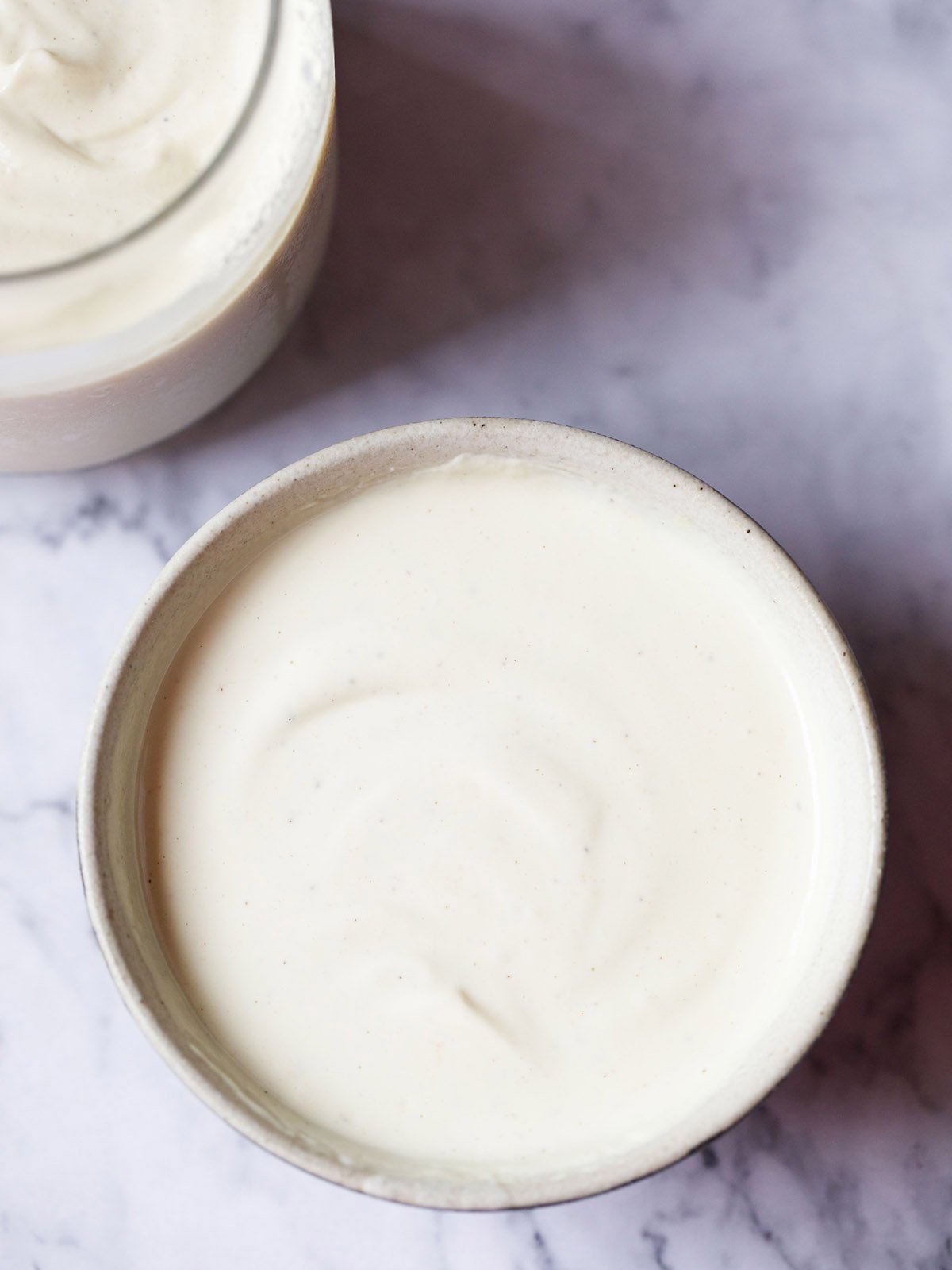
How to Make Eggless Mayonnaise
Prepare Cashews
1. Rinse 1 cup (125 grams) of cashews thoroughly in water. Drain and discard the water.
Tip: Use raw, unsalted cashews for this recipe. It’s acceptable to use cashew pieces if they are more economical, provided they are raw and unsalted.
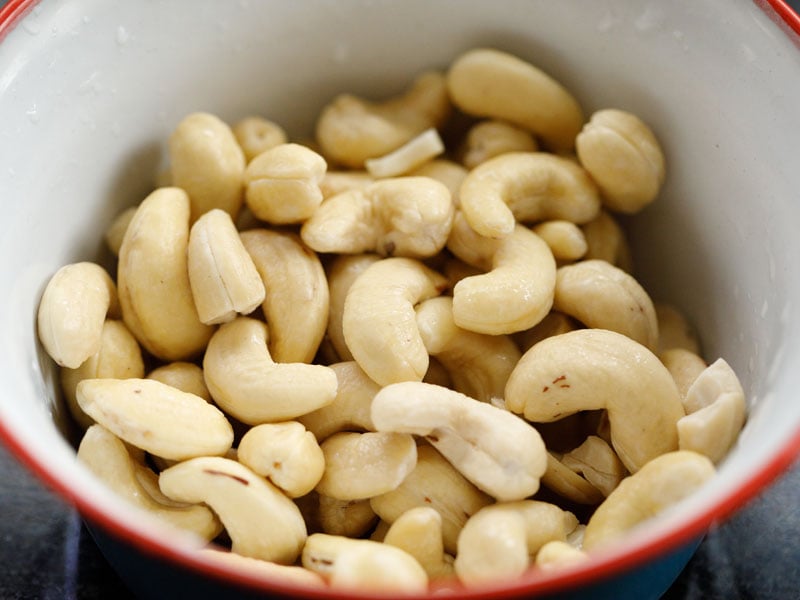
2. Place the cashews in a bowl and cover them with warm water. Soak for 30 minutes.

Blend & Make Mayonnaise
3. Drain and discard the water from the soaked cashews, then add them to a blender. Include 1 teaspoon of Dijon mustard, ½ teaspoon of raw sugar, a pinch of turmeric powder, 6 black peppercorns, and ½ teaspoon of rock salt.
Tip: You can substitute 1 teaspoon of ground mustard powder for Dijon mustard.
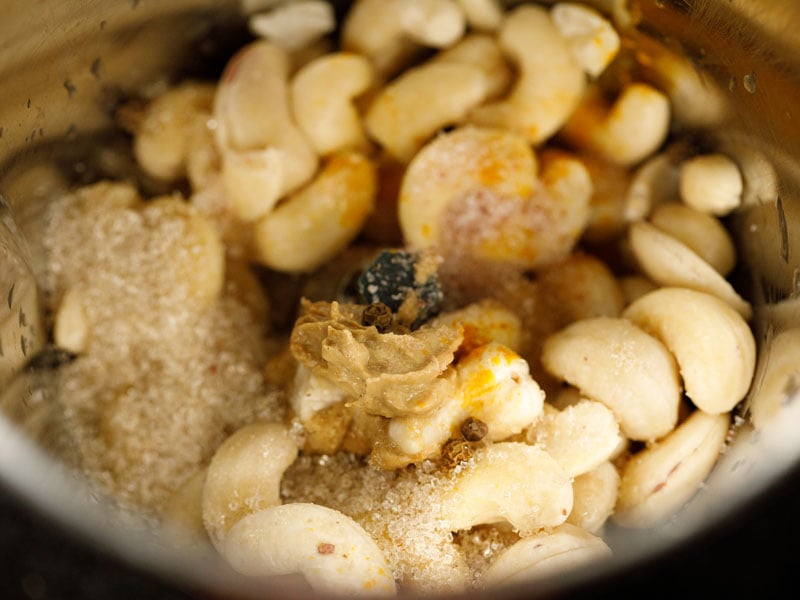
4. Add 1 tablespoon of apple cider vinegar or lemon juice.
Tip: For a Japanese-style vegan mayonnaise that is sweeter and tangier, increase the sugar to 1 tablespoon, the mustard to 2 teaspoons, and the apple cider vinegar (or lemon juice) to 2 tablespoons, then follow the same method.

5. Add 2 tablespoons of sunflower oil or any neutral-tasting oil.
Tip: It’s crucial to use a neutral oil when making mayonnaise. Good options include canola, vegetable, grapeseed, or avocado oil. Avoid oils with strong flavors, such as coconut, peanut, sesame, or olive oil.

6. While the blender is running, gradually add 7 to 8 tablespoons of water in parts and blend until smooth and creamy.
Tip: If you need to use this eggless mayonnaise right away, add only 4 to 5 tablespoons of water. The mayo will thicken when refrigerated, so 7 to 8 tablespoons of water works well if you have time to let it set. If you choose to use less water for immediate use, be sure to consume the entire recipe, or it may become too thick in the refrigerator.

7. Transfer the prepared vegan mayonnaise into a clean jar or airtight container. Seal it tightly and refrigerate.

Serving Suggestions
This mayonnaise strikes a perfect balance of creaminess and tanginess.
- Toppings & Dips: Serve it as a dip for Veg Momos, or drizzle it over French fries, potato wedges, or savory cabbage pancakes. It also works well in fusion-style dips or as a creamy chutney base.
- Versatile Spread and Filling: Use this mayo as a spread on bread or toast, or mix it into savory pies like Tomato Pie. It also makes a fantastic addition to vegetable-filled sandwiches or as a creamy layer in bakes.
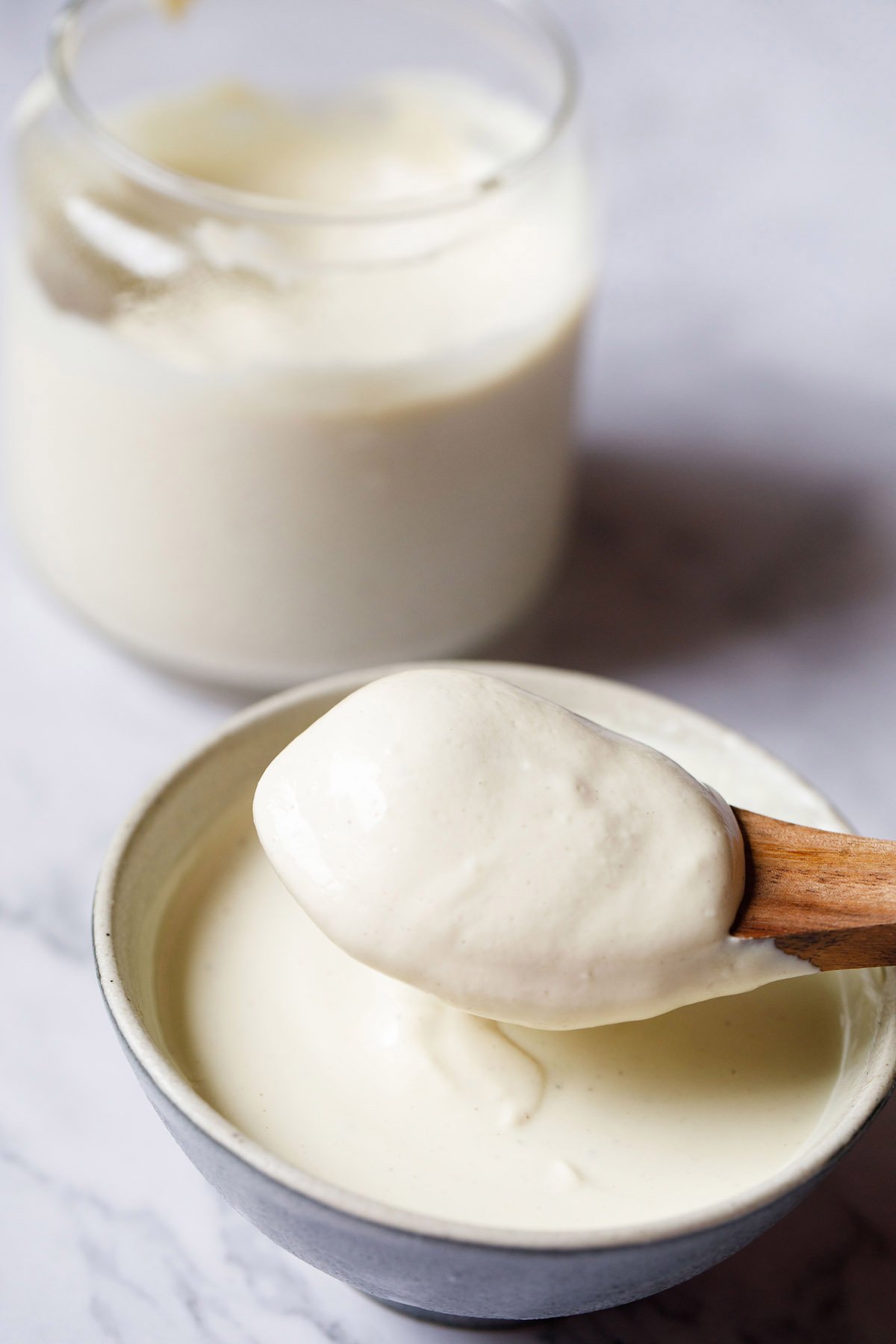
Storage
This eggless mayo remains fresh for up to a month in the refrigerator. You can also freeze it for three months.
Make sure to use an airtight container to store your eggless mayonnaise. This delicate mixture can absorb the flavors of nearby foods, so keep it away from strong-smelling items like cut onions or garlic in the fridge.
Expert Tips
- Cashews: Use raw, unsalted cashews—whole or broken pieces are fine, as long as they are not roasted or salted.
- Oil: A neutral-flavored oil is essential for the right taste. Opt for canola, vegetable, grapeseed, or avocado oil. Avoid strongly flavored oils like coconut, peanut, sesame, or olive oil, as they can overpower the mayonnaise.
- Mustard: Dijon mustard can be substituted with 1 teaspoon of ground mustard powder.
- Consistency: For immediate use, add only 4 to 5 tablespoons of water. The mayo will thicken upon refrigeration, so use 7 to 8 tablespoons of water if you plan to chill it before serving. Using less water means you should consume it all right away, or it may turn too thick once refrigerated.
- Japanese-Style Vegan Mayo: For a sweeter, tangier version, increase sugar to 1 tablespoon, mustard to 2 teaspoons, and apple cider vinegar (or lemon juice) to 2 tablespoons. Follow the same preparation method.
- Storage: Store the mayo in an airtight container. It easily absorbs nearby odors, so keep it away from strong-smelling foods like cut onions or garlic in the fridge.
Is Cashew Mayonnaise Good for You?
While mayonnaise is not typically considered a “health food,” this vegan version is significantly healthier. Cashews are rich in fiber, protein, heart-healthy fats, and nutrients like magnesium.
Apple cider vinegar is a powerful source of probiotics, which are beneficial for gut health. Whenever possible, opt for organic apple cider vinegar that contains the “mother” for maximum health benefits.
This eggless mayonnaise is also lower in fat and cholesterol than regular mayo, and since you’re making it from scratch, there are no artificial ingredients or preservatives. That sounds quite healthy!
FAQs
The sugar in this recipe is quite minimal (even in the Japanese-style mayo). It helps balance the sourness from the mustard and vinegar, resulting in a slightly sweeter product that won’t be overly tangy. If you are avoiding sugar or following the Whole30/Paleo diet, you can either omit it entirely or substitute a suitable sweetener.
This vegan mayo tastes best when made with cashews. It is creamy and thick, making it ideal for any recipe that calls for mayonnaise. Soaked almonds or macadamia nuts can also work, but the flavor will differ. Ensure that whatever nut you use is raw and unsalted.
As long as you’re using a neutral-flavored oil that doesn’t solidify at room temperature, you should be fine. Avocado, grapeseed, canola, or vegetable oil all work well.
You can use French mustard or any blended mustard (not whole grain) or ground mustard powder. However, mustard is crucial for the emulsification process, so do not omit it.
It sounds like you may have added too much water while blending. Ensure that you drain all the water from the cashews before adding them to the blender, and add the water slowly while blending to achieve the right consistency.
Yes, you can!
You can use lemon juice or plain white vinegar instead.
You will need a high-powered machine to cream the cashews properly. If you don’t have a blender, you can use a food processor or an immersion blender.
More Condiment Recipes To Try!

Eggless Mayonnaise Recipe (Plant Based)
This deliciously creamy vegan eggless mayonnaise recipe is even better than the regular stuff. It is made with cashews, oil, vinegar, Dijon mustard, seasonings, and spices. Use it in place of regular mayonnaise in any application.
Prep Time 5 minutes
Soaking Time 30 minutes
Total Time 35 minutes
Prevent your screen from going dark while making the recipe
-
Rinse cashews thoroughly in water. Drain and discard the water.
-
Place the cashews in a bowl and cover with enough warm water. Soak for 30 minutes.
-
Drain and discard all the water from the soaked cashews and add them to a blender.
-
Also add Dijon mustard, raw sugar, turmeric powder, black peppercorns, and rock salt.
-
Add apple cider vinegar or lemon juice.
-
Add sunflower oil or any neutral-tasting oil.
-
While the blender is running, slowly add 7 to 8 tablespoons of water in parts and blend until smooth and creamy.
-
Pour your completed vegan mayonnaise into a clean jar or airtight container. Seal it tightly and refrigerate.
-
This eggless mayo stays good for a month in the refrigerator. You can also freeze it for 3 months.
- Make sure to use raw, unsalted cashews. It’s fine to use cashew pieces, as long as they are raw and unsalted. You can also substitute cashews with almonds or macadamia nuts, if they are raw and unsalted.
- It is crucial to use a neutral-flavored oil when making mayonnaise. Good options include canola, vegetable, grapeseed, or avocado oil. Avoid oils with strong aromas or flavors, as they will affect the taste of your mayo.
- You can substitute 1 teaspoon of ground mustard powder for Dijon mustard.
- If you want to use this Veg Mayonnaise immediately, add only 4 to 5 tablespoons of water. The mayonnaise thickens when refrigerated, so use 7 to 8 tablespoons of water if you plan to chill it before serving. If you use less water, consume the entire recipe right away, or it may become too thick in the refrigerator.
- Store the Eggless Mayonnaise in an airtight container in the refrigerator.
Nutrition Facts
Eggless Mayonnaise Recipe (Plant Based)
Amount Per Serving (1 tablespoon veg mayonnaise)
Calories 62Calories from Fat 45
% Daily Value*
Fat 5g8%
Saturated Fat 1g6%
Sodium 78mg3%
Potassium 58mg2%
Carbohydrates 3g1%
Fiber 1g4%
Sugar 1g1%
Protein 2g4%
Vitamin B1 (Thiamine) 1mg67%
Vitamin B2 (Riboflavin) 1mg59%
Vitamin B3 (Niacin) 1mg5%
Vitamin B6 1mg50%
Vitamin E 1mg7%
Vitamin K 3µg3%
Calcium 5mg1%
Vitamin B9 (Folate) 2µg1%
Iron 1mg6%
Magnesium 24mg6%
Phosphorus 48mg5%
Zinc 1mg7%
* Percent Daily Values are based on a 2000 calorie diet.


